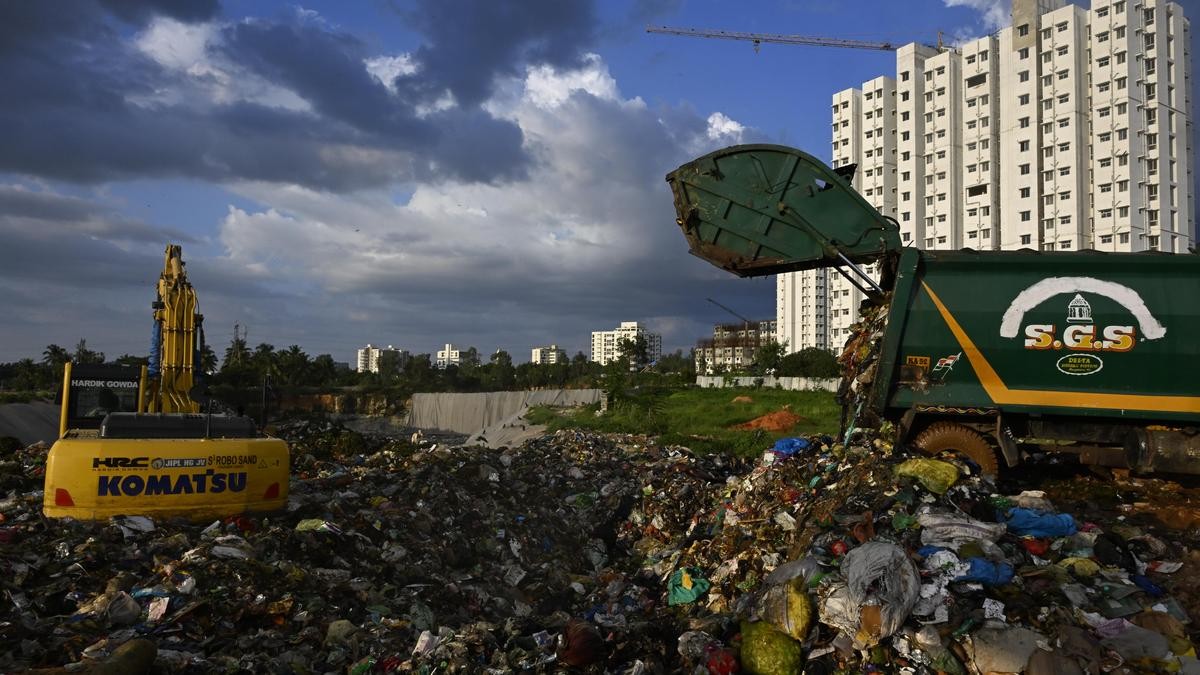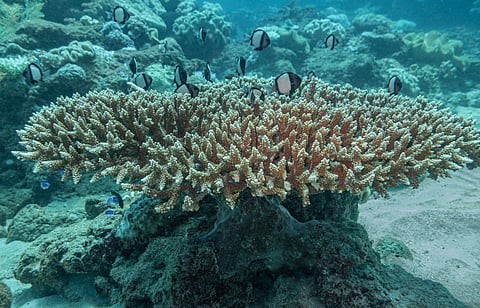Description
Disclaimer: Copyright infringement not intended.
Context:
A team of wildlife conservationists tagged the almost-blind Ganges river dolphin for the first time.
About the Ganges River dolphin (Platanista gangetica)
- Dolphins are one of the oldest creatures in the worldalong with some species of turtles, crocodiles and sharks.
- The Ganges River Dolphin, India's national aquatic animal since 2009, is unique in its ecology.
- It is also designated as the state aquatic animal of Assam.
- It is commonly known as "Susu" because of the sound it makes when it emerges to breathe.
- The Gangetic River dolphin is known as the "Gangetic tiger" for the role it plays as an apex predator and because it is an ecosystem indicator species.
Habitat and Adaptation
- It can only survive in freshwater environments. As a mammal, it can only breathe underwater and on the surface for 5-30 seconds at a time.
- They are nearly blind and rely on echolocation for their biological needs, making ultrasonic sounds when hunting that bounce off prey and create a mental image for navigation and feeding.
Distribution
About 90% of the population lives in India. Historically distributed in the Ganga-Brahmaputra-Meghna and Karnaphuli river systems.
Physical features
- Features include a long thin snout, rounded belly, stocky body and large fins.
- It has a pipe-like slit on the top of its head that acts as a nostril.
- Females are larger than males and give birth to one young every two to three years with a gestation period of about 10 months.
Protection status
- International Union for Conservation of Nature (IUCN): Endangered
- Nature Conservation Act, 1972: Schedule I.
- Convention on International Trade in Endangered Species (CITES): Annex I.
- Convention on Migratory Species (CMS): Annex I.
Conservation efforts
- Vikramshila Gangetic Dolphin Wildlife Sanctuary, Bihar: India's only dolphin sanctuary.
- Project Dolphin: Modeled after Project Tiger, focusing on special conservation measures for Gangetic River dolphins as they are an umbrella species.
-
- To protect sea and river dolphins as well as related cetaceans.
- It is funded by the Indian Ministry of Environment, Forests and Climate Change
- National Aquatic Animal: It was declared the National Aquatic Animal on October 5, 2009, which is celebrated as National Ganga River Dolphin Day.
Types of Rivers Dolphins

Species
|
Distribution
|
Key Features
|
Conservation Status
|
|
Indus River Dolphin
|
Indus River in Pakistan
|
Similar to the Ganges River Dolphin, but smaller; adapted to the murky waters of rivers
|
Threatened
|
|
Amazon River Dolphin (Boto)
|
Amazon and Orinoco river basins in South America
|
Pink or gray color; long, flexible neck; can breathe through vent or nostrils
|
Vulnerable
|
|
Irrawaddy Dolphin
|
The Irrawaddy River and coastal waters of Southeast Asia. Also found in Chilika Lake, Odisha
|
Stocky body; short, blunt beak; gray color
|
Endangered
|
|
Tucuxi
|
Amazon and Orinoco basins of South America
|
Small, gray dolphin with a prominent beak; active and playful
|
Data Deficient
|
|
Baiji (Yangtze River Dolphin)
|
Yangtze River in China
|
Unique white-colored dolphin with a long slender beak
|
Extinct
|
ALSO READ ABOUT
Project Dolphin
National Dolphin Day
Effect Of Noise Pollution On Dolphins
Source:
THE HINDU
|
PRACTICE QUESTION
Q.Consider the following statements regarding the Ganges River dolphin:
- It is primarily found in the Ganges and Brahmaputra rivers.
- It is classified as an endangered species due to habitat loss and water pollution.
- The Ganges River dolphin is protected under the Wildlife Protection Act, 1972 in India.
How many of the above-given statements is/are correct?
(a) Only one
(b) Only two
(c) All three
(d) None
Answer: c
Explanation:
Statement 1 is correct: The Ganges River dolphin is primarily found in the freshwater rivers of the Ganges-Brahmaputra-Meghna basin in India, Bangladesh, and Nepal.
Statement 2 is correct: The Ganges River dolphin is listed as an endangered species due to threats from habitat loss, water pollution, and entanglement in fishing gear.
Statement 3 is correct: The Ganges River dolphin is listed under Schedule I of the Wildlife Protection Act, 1972, providing it the highest level of protection in India.
|












